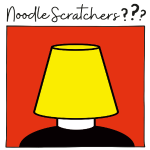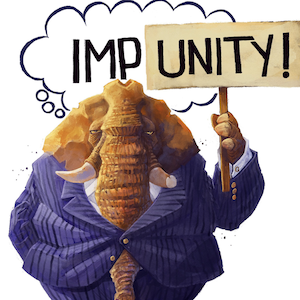Critics 'appalled' as real estate developer offers to give away prehistoric relics found in Florida
Published in News & Features
MIAMI — The Related Group real estate development company has offered to donate hundreds of thousands of ancient artifacts and other relics unearthed at the site of a long-buried Native American town in Brickell to universities across the country — drawing sharp rebukes from archaeologists, some Native American activists and at least one of the schools.
Related, which has two residential towers under construction on the Brickell site, agreed under considerable public pressure in mid-2023 to work with the city of Miami’s historic preservation program on a long-range plan to preserve and exhibit the rich trove of finds from the Tequesta Indian village, estimated by its own experts to date back roughly 2,000 years, and possibly further back.
But Related has now missed two deadlines imposed by the city for a fleshed-out plan, and the developer’s representatives told the city this week in a public hearing that it would take much longer to complete the task, though they remain committed to it.
Among the critical questions Related has yet to solve: where to permanently store the 1 million or so mostly fragmentary finds from the archaeological excavation on the Miami River’s south bank, the most extensive ever in Florida; how to make them available to researchers; and who will pay for that endeavor. Related, which says it has spent $45 million on the legally required excavation and other measures, has declined to cover that additional cost.
Instead, independent archaeologists in South Florida say, the company in recent days sent queries to universities asking if they’re interested in submitting proposals to the developer for the storage and curation of the rare artifacts, which Related legally owns. The queries went to some in-state schools, including Florida Atlantic University in Boca Raton and the University of Central Florida in Orlando, but also to some outside the state, the archaeologists say.
Roughly 2,000 select “museum-quality” artifacts were not included and have been set aside while they’re reviewed by Florida’s officially recognized tribal groups, including the Seminole Tribe, say Related representatives who confirmed the offer but downplayed its significance.
The objects were removed from the site before the start of construction during two years of careful digging and include prehistoric tools and other artifacts made by human hands, as well as exceedingly rare and well-preserved animal and plant remnants. Human remains found on the site are re-interred separately at a secret location under state law in consultation with the tribes.
The chair of archaeology at one institution, the University of California, Berkeley, said in her response to the offer from Related’s Matthew Gorwitz and the developer’s consultants at the private, Davie-based Archaeological and Historical Conservancy that she was “appalled” by it.
In her emailed response, on which she copied local archaeologists at the University of Miami, Cal archaeology chair Sabrina Agarwal echoed what other critics of Related’s latest move say: The objects must remain as close as possible to their origins in Florida.
“I do wish to express that I am appalled that the Conservancy and The Related Group would consider donating this material to an institution so far away from the state, and not involve State tribes as was done with the ancestral remains from the site,” Agarwal wrote. “An obvious institution would be the University of Miami.”
The exchange came to light Tuesday during a hearing by the city’s historic preservation board at which Related sought approval for its design for public exhibition spaces dedicated to the ancient Tequesta town along a planned river walk at the site. UM archaeology professor Traci Ardren submitted the Cal professor’s email to the board as a public record.
Related’s lead attorney, Iris Escarra of Greenberg Traurig, downplayed the importance of the queries, saying they were meant to be exploratory and don’t commit the company to anything. She said the Related solicitation noted that Florida institutions would receive priority.
“We were just asking for proposals to see what opportunities are available,” Escarra told the board. “This is nothing more than that.”
However, the city’s archaeologist, Adrian Espinosa-Valdor, told the board that the intent behind the plan from the start has been to keep all materials from the dig close to home.
UM’s Ardren, who helped lead a public campaign by independent experts and preservationists to designate the site a historic landmark over billionaire Related founder Jorge Perez’s initially strenuous objections, contended the company has had sufficient time to develop the required storage and curation plan, but has chosen not to spend the money that would require.
Related has embraced preservation and public exhibition of the artifacts to a significant degree after the city historic board voted to declare a portion of the property that’s still unexcavated, 444 Brickell Avenue, a protected archaeological landmark. The recovered objects are being safely held in boxes and bags in vacant office space in the building, which Related plans to demolish in the future for construction of a third tower.
“I’m very pleased we now agree on the importance of this site. That is not where we were before,” Ardren told the board. “What is important is that the materials stay locally. But Related waited until about two days ago to begin making a plan for this. We’ve been waiting. The timeline set by the board was not met. The degree to which they are serious about complying with the plan is questionable.”
Ardren noted that Related has yet to respond to a joint proposal twice submitted to the developer by UM and Florida International University. While Ardren told the board that’s she’s not pushing for her university’s proposal, she said she believes Related should fund a conservation and research center in Miami dedicated to the Tequesta site.
Meanwhile, angry independent members of Native American tribes called on the city to crack down on Related’s delays and refrain from approving anything until the developer submits a full plan.
“All these things they were supposed to do they haven’t, and yet they want to blaze forward without doing their due diligence,” Miccosukee member and activist Betty Osceola said.
Taino and American Indian Movement member Robert Rosa, who argued vehemently that no items should have been removed in the first place from what he called a sacred site, called Related’s effort at due diligence “bulls---.” He noted the developer has yet to complete an inventory and analysis of the findings at the site as called for by its own plan.
Related’s Escarra conceded that Conservancy consultants led by veteran South Florida archaeologist Bob Carr have not completed those tasks, but are working on it and updating the inventory list as they go through the materials. Also not completed, she acknowledged, is an agreement with the HistoryMiami museum for safekeeping and exhibition of the most significant finds. Those will take at least 18 additional months, she said.
“We know we have to continue to do work. We’re not done,” Escarra told the board.
In September, the board voted to give Related until January to deliver a detailed plan after the city preservation office said its initial version lacked critical details. On Tuesday, the board again put off a decision, postponing a vote on the proposed design of the riverwalk exhibition spaces by Arquitectonica, once more citing a lack of detail.
Escarra and firm principal Bernardo Fort-Brescia promised to have a detailed architectural design ready for the board’s March 4 meeting.
The board will then review other aspects of the plan at six-month intervals to ensure it remains on track. Still to come is what could prove the most critical element — how to address any finds at the 444 Brickell lot, though no timeline has been released for construction of that third tower. Because that site is a designated landmark, the board has substantial authority to require Related to preserve and display the finds from the dig in a publicly accessible manner.
Carr, Related’s archaeology consultant, told the board that it’s now clear that the finds represent a major discovery indicating that the Tequesta town was far more extensive and developed than previously believed. The town, whose peak occupation likely occurred some 1,500 years ago, included the site of the Miami Circle National Historic Landmark, a ceremonial site at the mouth of the river, and extended along the south bank, Carr said.
Related has pledged to connect the Brickell site to the Miami Circle under the Brickell Bridge that spans the river, and Carr is working on a broader plan to link the indigenous sites on both sides of the waterway through what he calls the Tequesta Trail, a demarcated path.
“The importance of this project cannot be overstated,” Carr told the board, referring to the Related plan. “We have found a gold mine of knowledge and information, and now it’s time to put out this knowledge and information to the public.”
_____
©2025 Miami Herald. Visit miamiherald.com. Distributed by Tribune Content Agency, LLC.







Comments